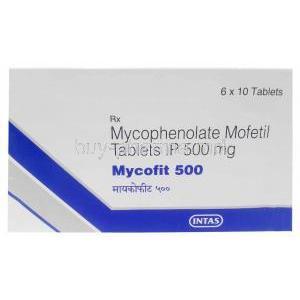Dapsone is an anti-infective medicine that fights bacteria and protozoa in the same way as sulphonamides, that is by inhibiting the synthesis of dihydrofolic acid through competition with para-amino-benzoate for the active site of dihydropteroate synthetase 1. Dapsone has been used to treat dermatitis herpetiformis (a skin condition) and leprosy 23. It has also been found to be effective in treating autoimmune diseases such as systemic lupus erythematosus (SLE) 4. The European League Against Rheumatism (EULAR) recommends dapsone as an adjuvant treatment for bullous pemphigoid, a type of autoimmune blistering disease 5. Dapsone has also been found to be effective in treating chronic idiopathic or autoimmune urticaria 6. In addition, dapsone is a promising agent, useful in treating patients with bullous diseases of autoimmune aetiology, including BP. Adverse events of dapsone are dose dependent and usually reversible. We recommend the use of an immunosuppressive agent at the beginning of the treatment 5. Dapsone is also being explored for off label use in treating bacterial and parasitic infections although comprehensive data is still pending 2.
Dapsone
- I. Introduction
- II. Composition of Dapsone
- III. How Dapsone Works: Mechanism of Action
- IV. Approved Uses of Dapsone
- V. Off-Label Uses of Dapsone
- VI. Dosage and Administration Guidelines
- VII. Common Side Effects of Dapsone
- VIII. Important Precautions and Warnings
- IX. Drug Interactions with Dapsone
- X. Special Populations: Administration Guidelines
- XI. Contraindications and Careful Administration
- XII. Overdosage and Handling Precautions
- XIII. Conclusion
I. Introduction
Dapsone, a medication with antiprotozoal properties, has been instrumental in treating various dermatological and infectious conditions. Developed in the 1900s, this medicine has found multiple uses over time. As its therapeutic applications continue to expand, it is crucial to have an understanding of how to use Dapsone correctly its interactions, with other medications, and the precautions that need to be taken.
II. Composition of Dapsone
Dapsone's chemical makeup is defined by its sulfone composition, which gives it anti-inflammatory qualities. The active ingredient in Dapsone is 4,4' diaminodiphenyl sulfone. Inactive ingredients often include binders and fillers as excipients. Dapsone can be found in forms such as tablets and topical creams to meet various medical requirements commercially.
III. How Dapsone Works: Mechanism of Action
Dapsone works by blocking the activity of an enzyme called dihydropteroate synthase, which is necessary for bacterial folate production. This interaction disrupts growth and reduces inflammatory processes. In terms of its impact on growth, Dapsone interferes with folate synthesis. Additionally, it hinders the release of cytokines, thereby exerting anti-inflammatory effects. The pharmacodynamic properties of Dapsone enable it to act quickly, although its effectiveness duration may differ from person to person.
IV. Approved Uses of Dapsone
Dermatitis herpetiformis is a skin condition that is commonly treated with Dapsone therapy. Actual clinical experiences have shown relief of symptoms in patients who are affected by this condition 1.
In the field of leprosy, Dapsone has brought about a revolution by becoming a component of multi-drug treatment plans. It has greatly reduced illness severity and effectively halted the spread of the disease 2.
Dapsone also plays a role in both preventing and treating Pneumocystis jirovecii pneumonia, particularly in individuals with weakened immune systems 34.
Here are some references that you can use to learn more about Dapsone and its potential benefits:
- “Dapsone.” MedicineNet, 11 Jan. 2023, 3.
- “Dapsone.” Wikipedia, Wikimedia Foundation, 10 Aug. 2023, 4.
- “Dermatitis Herpetiformis (DH): Definition, Causes & Treatment.” Cleveland Clinic, 2023, 1.
- “Dermatitis Herpetiformis > Fact Sheets.” Yale Medicine, 2023, 2.
V. Off-Label Uses of Dapsone
VI. Dosage and Administration Guidelines
Approved uses typically have established dosages, varying between 50 to 200 mg daily depending on the specific disease condition. There are administration routes for this medication, including oral and topical forms. It is advisable to divide the dosage to prevent any discomfort in the tract. By optimizing the timing and frequency of administration, we can enhance the effectiveness while reducing potential adverse effects.
VII. Common Side Effects of Dapsone
Dapsone therapy can cause side effects. It's essential to be aware of them. Some common hematologic side effects include methemoglobinemia (methemoglobin levels) and hemolysis (breakdown of red blood cells). Additionally, there may be issues like nausea and vomiting and cutaneous reactions such as rash and hypersensitivity. It's crucial to monitor these symptoms. This comprehensive overview of Dapsone highlights its composition, mechanisms, and clinical applications while emphasizing the importance of discussing any side effects with your doctor for the best therapeutic outcomes.

VIII. Important Precautions and Warnings
To ensure the use of Dapsone, it is crucial to understand its contraindications and precautions clearly. One important contraindication is having a Glucose 6 phosphate dehydrogenase (G6PD) deficiency, which increases the risk of hemolysis. It is also important to consider existing medical conditions like liver and kidney function. Additionally, it is necessary to exercise caution with foods and drinks that might interact negatively with Dapsone, so being mindful of your diet is essential.
IX. Drug Interactions with Dapsone
Pharmacological synergy or antagonism may occur when Dapsone is taken with medications such as Rifampin or folic acid. Rifampin can reduce the effectiveness of Dapsone, while folic acid can potentially counteract adverse hematological effects. It is essential to exercise caution regarding drug cross-reactivity. Therefore, it is crucial to disclose your list of medications to healthcare providers and not underestimate its importance.
X. Special Populations: Administration Guidelines
Pharmacological treatment frequently requires customized approaches that consider characteristics. When it comes to patients, dosage adjustments are necessary due to changes in how the body processes medications. When administering medication to pregnant or breastfeeding women, a thorough analysis of risks and benefits is crucial. When it comes to children, specific dosage protocols based on their age are required.
XI. Contraindications and Careful Administration
There are situations where it is not recommended to use Dapsone, such as when someone has severe anemia or specific types of hypersensitivity. These are considered contraindications for the use of Dapsone. On the other hand, there are relative contraindications where caution and customized approaches in treatment are required. Regular monitoring through laboratory tests and clinical evaluations is essential to ensure safe treatment.
XII. Overdosage and Handling Precautions
In case of an overdose, it is crucial to seek medical help. The symptoms can vary from feeling nauseous to experiencing severe effects on the nervous system. These symptoms may include vomiting and difficulties with functions. If such a situation arises, following the steps for medical assistance is crucial. Additionally, it is vital to adhere to guidelines for storing and disposing of Dapsone as part of responsible medication management.
XIII. Conclusion
This article overviews Dapsone, discussing its various therapeutic uses, associated risks, and proper management. Effective communication between patients and physicians can significantly enhance the outcomes of treatment. Ongoing research is expected to uncover more medical applications for Dapsone, solidifying its importance in modern medicine.

















